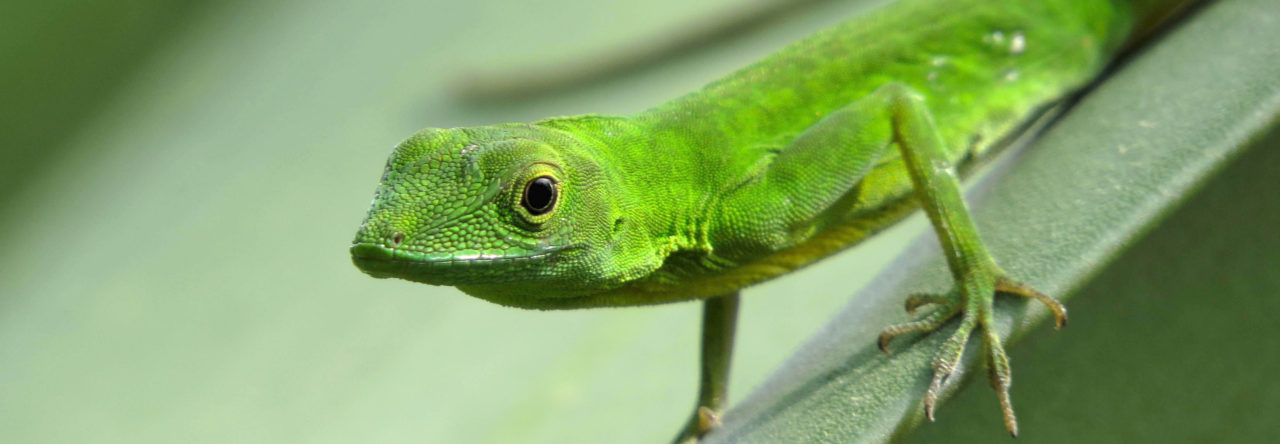Two years ago, we posted on a paper in Nature in Singapore documenting the occurrence of the festive anole, Anolis sagrei, in Singapore. The ubiquitous colonizers had turned up in the newly created Gardens by the Bay, an enormous new botanical garden built on reclaimed land at the southern end of the island. AA decided to look into the situation further and sent this correspondent to the “Lion City” to report back on the situation.
Reporting for duty at the Gardens at approximately 930 am on the morning of 16 April, we quickly determined that the lizards are common in the lushly planted gardens pretty much wherever we went. The only exception was an open meadow housing a statue, where we did see an introduced agamid lizard (below). This area was only searched for three minutes, however, and it would not be surprising to find the anoles in the shrubbery surrounding the statue (below). The other place the lizards were not seen were in the two spectacular indoor cool houses, the Flower Dome and the Cloud Forest. Both are kept at temperatures possibly too low for the lizards, and also likely are fumigated.
 Otherwise, however, the anoles seem to be everywhere and it seems unlikely, given the luxuriance of the vegetation, that they can be eradicated (and we know how well such elimination efforts have fared in Taiwan—not).
Otherwise, however, the anoles seem to be everywhere and it seems unlikely, given the luxuriance of the vegetation, that they can be eradicated (and we know how well such elimination efforts have fared in Taiwan—not).
The question is whether the anole will spread to the rest of Singapore, and from thence to Malaysia. Given the heavy motor traffic bringing visitors to the gardens, it seems inevitable that the anoles will hitch-hike their way across the bridge and colonize the main island of Singapore, which is for the most part one big Anolis sagrei habitat, with plenty of tropical vegetation everywhere. Moreover, the gift shop at the Gardens was selling orchids. I don’t know where they came from, but if on site, that is a great way to distribute brown anoles far and wide.
 It’s not clear whether the anole is already present on the Singaporean main island. One commenter on our previous post said that it had been seen elsewhere, and I was told that there were unsubstantiated reports that it had been observed in the Singapore Botanical Garden. I spent several hours there myself and saw the anole mimic pictured on the right, but no anoles.
It’s not clear whether the anole is already present on the Singaporean main island. One commenter on our previous post said that it had been seen elsewhere, and I was told that there were unsubstantiated reports that it had been observed in the Singapore Botanical Garden. I spent several hours there myself and saw the anole mimic pictured on the right, but no anoles.
My prediction is that in ten years, Anolis sagrei will be very common in Singapore. But let’s see what the varanids, the Calotes and the birds have to say about that.
- Evolution in Real Time on Lizard Island - March 23, 2025
- Spider Snags Adult Anolis osa - March 22, 2025
- An Homage to the Green Anoles of New Orleans - March 21, 2025



